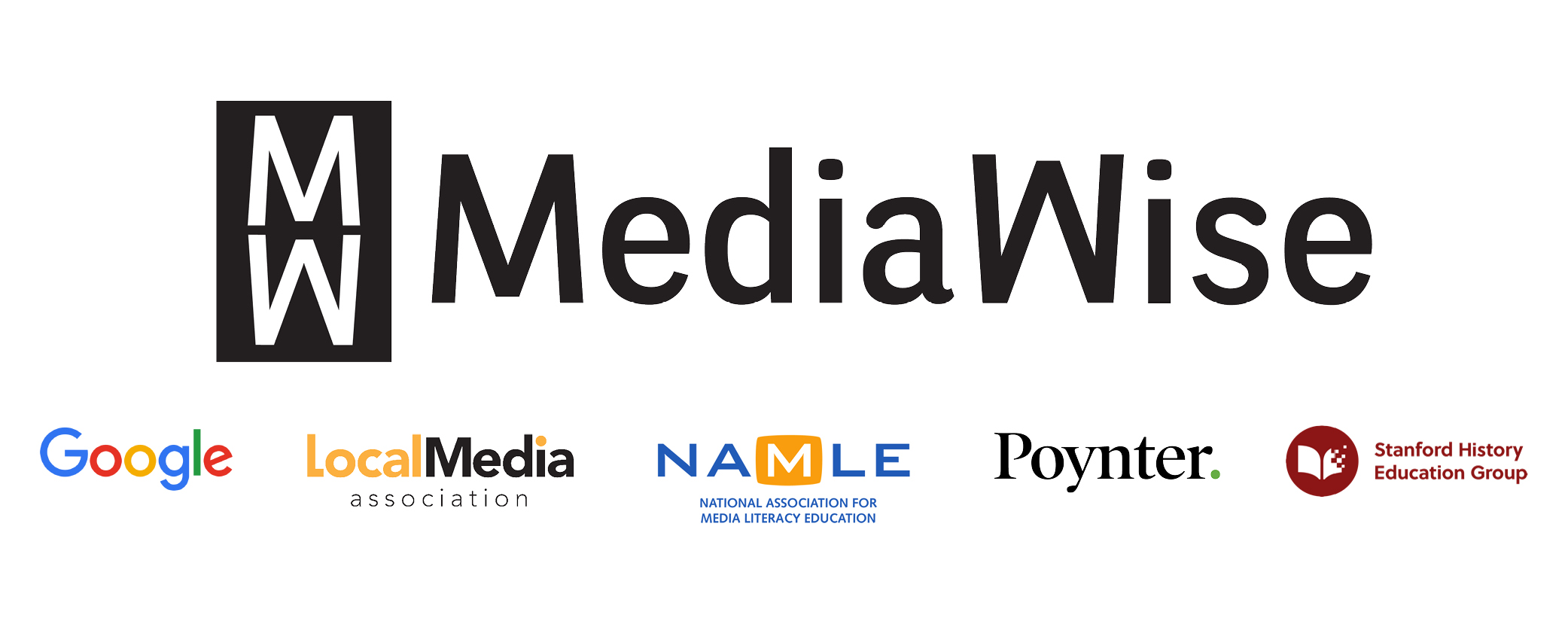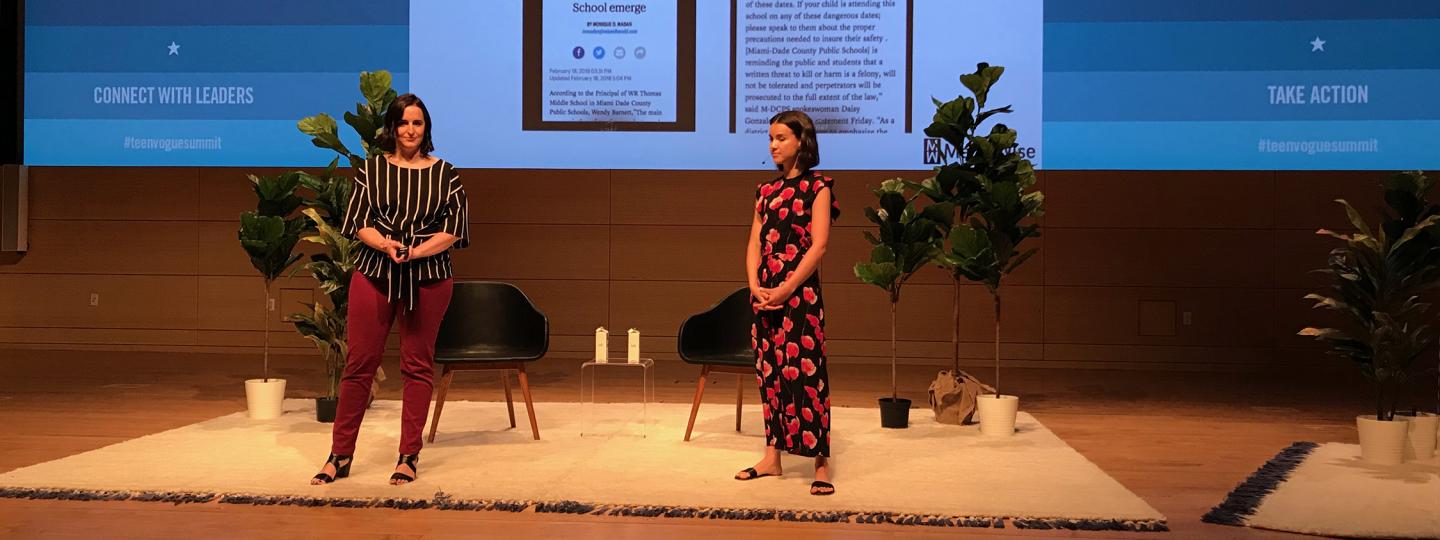Representatives from MediaWise, a groundbreaking digital information literacy initiative, presented a session titled "Fact-Check on Fake News" at the Teen Vogue Summit on Friday at The New School in New York City.
MediaWise is a partnership between Google, Poynter, Stanford University and the Local Media Association aimed at teaching teens to tell fact from fiction online. Research has shown that students need help navigating the sea of digital information they encounter in their daily lives.
The MediaWise initiative will feature curriculum to be taught in classrooms, a first-of-its-kind teen fact-checking endeavor and an awareness and educational campaign voiced, in large part, through several popular YouTube Creators.
Lifestyle expert and YouTube Creator Ingrid Nilsen teamed up with Katie Sanders, deputy editor and professional fact-checker at Poynter-owned PolitiFact, for the Teen Vogue Summit session, which guided more than 500 teens in the audience through three real-life fact-checks.
“This is something that we are both really passionate about,” Nilsen said. “We are constantly inundated with information. It can be really difficult to decipher fact from fiction.”
“Even as a professional fact-checker, I once fell for an online hoax which said that Beyonce was paying her interns in Pepsi and selfies,” Sanders said, laughing.
Nilsen and Sanders looked at three examples of claims made on media sites popular with teens, including Instagram, Twitter and Snapchat. The team shared three practical tools that teens, and others, can use when assessing information online.
Reverse Google Image Search
If you come across a questionable picture on the internet, you can simply right click on the image and select “search Google for the image” in the drop-down menu that appears if you're using the Chrome browser. The results generated include a list of all the times that image was used and links to sites that debunk that image.
Check Multiple Sources
Fact-checkers often deploy the concept of lateral reading, or checking multiple sources. This is easily done by opening up multiple tabs in a web browser and launching several searches that can help determine if a claim is true.
Go to the Original Source
Don’t take other people’s word for it. If you see a claim online, seek out the original information for yourself before you make the decision to share it.
“When false information spreads, it can spread fear. When you practice the skills shared today, you can play a role in making change,” Nilsen said. “This is how you become an activist for the truth. By being mindful about what it is that you’re sharing, you’ll be a more informed voter when you head to the polls and you’ll play an active role in shaping our future. Imagine what our world would look like if we only shared factual information. Our political and cultural landscape would look completely different.”
You can watch the video of the MediaWise session at the 2018 Teen Vogue Summit here.
The tips shared during this session resulted from research by the Stanford History Education Group as part of its work around civic online reasoning, the inspiration of the MediaWise partnership.
To stay connected with MediaWise, please visit poynter.org/mediawise.
MediaWise is funded by a grant to Poynter from Google.







